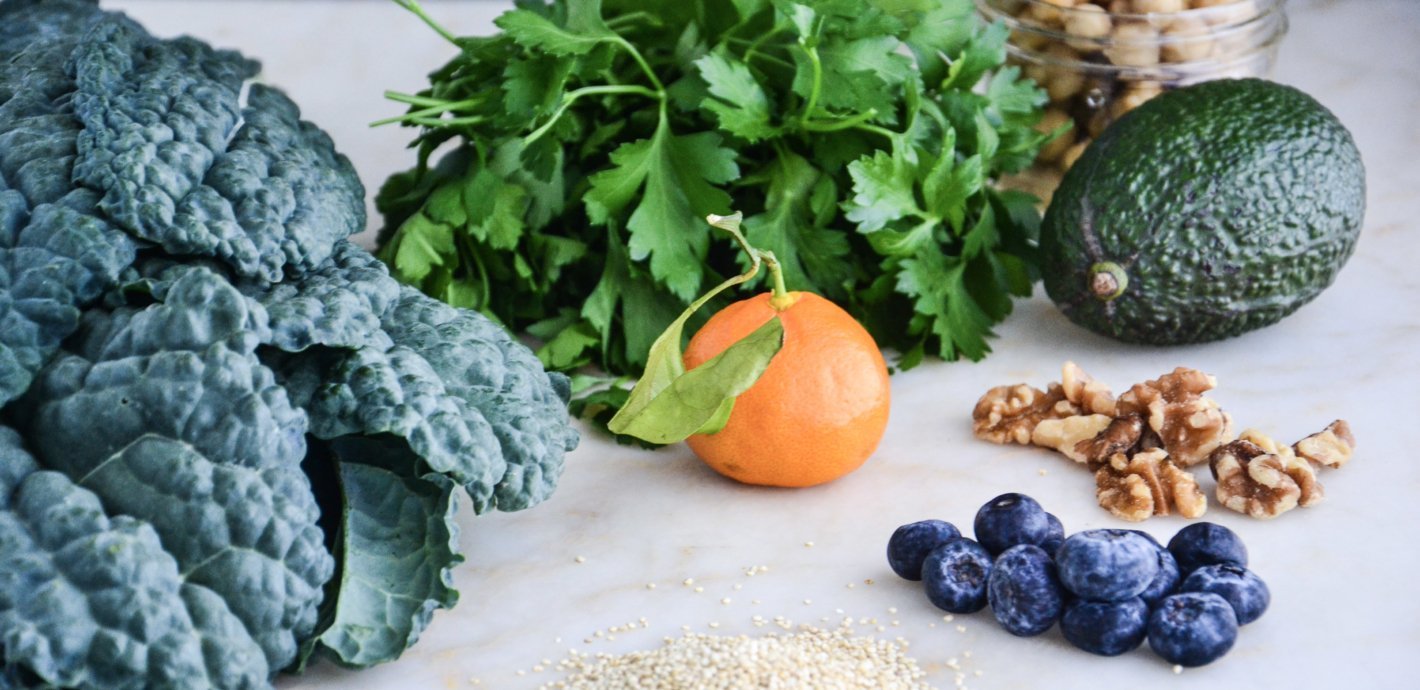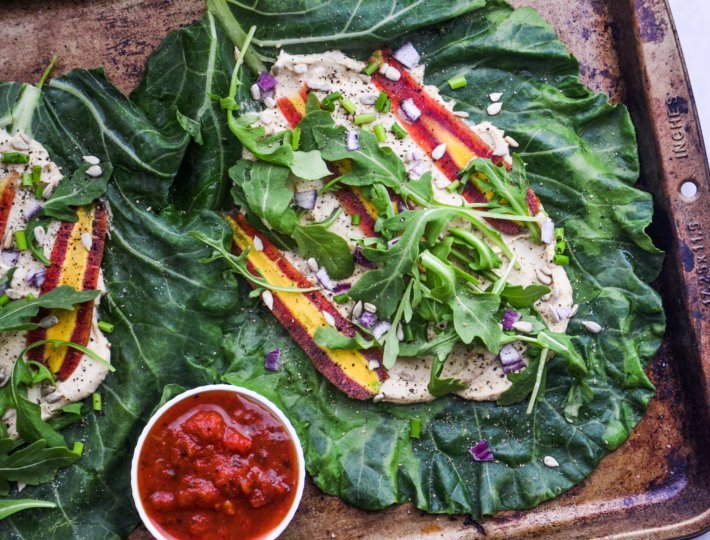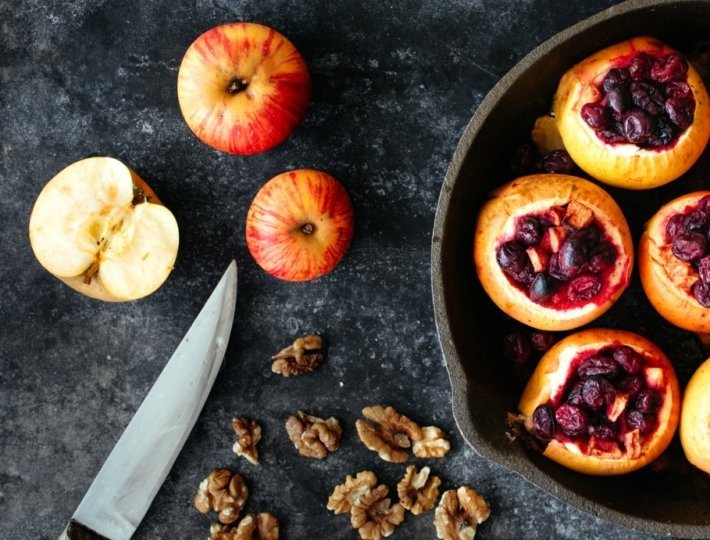We’re all about balance and moderation here at Sonima. When it comes to health, we believe our bodies are fully capable of functioning optimally when we are loving and gentle with ourselves. So, as you take stock of your wellness goals for the year—and the diet you might need to follow to get there—we propose taking a simple approach. Rather than following a restrictive plan, focus on filling your plate with nutritious whole foods that can serve as a foundation for clean eating.
Our nutrition expert, Amie Valpone, recommends the following eight versatile superfoods as a starting point. Stock your kitchen with these basics, get creative with your preparations, and enjoy the benefits of a healthy, balanced diet all year long.
1. Leafy Greens
Leafy green superfoods, such as Swiss chard, kale, spinach, and dandelion greens, are rich in vitamins A, C, and K. They also contain the minerals iron and calcium, so if you’re lactose intolerant or avoid dairy because of digestive issues, consider loading up on leafy greens to help get your calcium fix.
To prepare, add a single tablespoon of extra-virgin olive oil to a large skillet and heat over medium heat. Add 1 clove of minced garlic and cook for 1 minute or until golden brown. Then add 1 head of finely chopped leafy greens and cover. Cook for 2 minutes, then stir until the greens are wilted. Season to taste with ½ teaspoon sea salt and ¼ teaspoon pepper and serve. Leftover sautéed leafy greens keep in a sealed container for up to two days in the refrigerator.
2. Beans, Legumes, Grass-Fed Beef, or Organic Poultry
Beans and legumes are excellent sources of fiber and protein. For examples, versatile chickpeas contain about 12 grams of fiber per cup, which is almost 50 percent of the daily recommended intake for women. They’re also a great source of iron, zinc and copper. Beans and legumes are a great choice if you are vegetarian or vegan, or if you don’t easily digest animal protein.
If you feel more energized eating meat or beans make you bloated and gassy, organic animal proteins such as lamb, grass-fed beef, bison, and chicken are a great options. Choose organic to avoid growth hormones and antibiotics, and select grass-fed beef, which has more heart-healthy omega-3 fatty acids than other beef.
Beans and legumes are delicious served in salads, soups, or even spread on toast. Enjoy grilled or roasted beef and chicken, or add meat to stews, soups, and stir-fries.
3. Nuts and Seeds
Nuts and seeds are high in monounsaturated and polyunsaturated fats and omega-3 fatty acids, which may help fight inflammation and ward off diseases. The healthy fats, protein, and fiber in nuts helps you feel full and satisfied. And certain nuts, such as walnuts, are also loaded with antioxidants, which help protect your body from cellular damage and premature aging. When buying nuts, steer clear of the bulk bins. Many are dirty, making the nuts prone to mold.
Eat nuts and seeds as a snack or tossed into a meal. You can also make your own nut or seed butter: In a mini food processor, blend 2 cups of nuts with ½ teaspoon sea salt until it forms a peanut butter consistency. Scrape down the sides as needed to blend, then transfer to a serving bowl and serve atop whole-grain toast or with sliced apples. Leftover nut butter keeps in a sealed container for up to three weeks in the refrigerator.
4. Gluten-Free Whole Grains
Whole grains are packed with fiber and other nutrients such as the minerals copper, phosphorus, manganese, and magnesium. Millet, quinoa, and wild rice are some of my favorite choices because they have loads more flavor compared to white rice. These grains are also easy to batch cook on a Sunday night; refrigerate the cooked grain in a sealed container to use throughout the week in lettuce wraps, soups, and salads.
To eat, cook ½ cup of any gluten-free whole grain according to the package directions in a medium pot with water or vegetable or organic chicken broth for extra flavor. Remove from the heat and toss in a few tablespoons of your favorite herbs, fruit, and nuts, then toss with olive oil, lemon juice, and salt and pepper. Leftover gluten-free whole grains keep in a sealed container for up to four days in the refrigerator.
Related: Grain-Free Lemon Almond Crackers
5. Fresh Herbs
Fresh herbs contain vitamin C and are loaded with antioxidants and anti-inflammatory compounds. When you purchase fresh herbs, look at the roots to make sure they still look bright green and fresh.
Parsley, basil, and dill are versatile options that work well in salads, while rosemary and thyme are good for seasoning vegetables or roasted meat. You can also add finely chop herbs to scrambled eggs. Store fresh herbs in the fridge in a jar of water like you would flowers to keep them perky.
6. Berries
Scientists have discovered that berries—blueberries, raspberries, blackberries, and strawberries—have some of the highest antioxidant levels of any fresh fruit. They are also a good source of fiber, phytochemicals, and vitamin C. In fact, a cup of strawberries has more vitamin C than a medium orange. They also add a touch of natural sweetness to any recipe without having to use added sugar.
Add fresh berries to yogurt parfaits, as a topping for ice cream, or dip them into creamy almond butter for a sweet treat. Or toss 1 cup frozen berries into your favorite smoothie, and you can forgo adding ice cubes and other sweetener.
7. Avocado
In addition to being addictively delicious, avocados contain more potassium than bananas, and they’re loaded with heart-healthy monounsaturated fatty acids. They also are full of fiber, which helps boost satiety.
To eat, slice a large (and very ripe) avocado in half lengthwise and discard the pit. Serve with a salad of greens or whole grains, on the side of eggs, mashed on toast, or prepared as guacamole.
Related: The Creamiest Avocado Aioli Sauce
8. Citrus
Citrus is often thought of as a powerful source of vitamin C, however, citrus fruits also contain potassium, calcium, and antioxidants to protect our bodies from oxidative stress and free radicals.
Citrus is at its peak ripeness this time of year, and the fruit makes a satisfying sweet and tangy snack. Lemon juice, lime juice, and orange juice are also fantastic used in salad dressings, marinades, or simply squeezed on fresh vegetables or roasted meat or fish.
>>Amie Valpone is the founder of The Healthy Apple and best-selling author of the cookbook Eating Clean: The 21-Day Plan to Detox, Fight Inflammation, and Reset Your Body.












Comments (0)